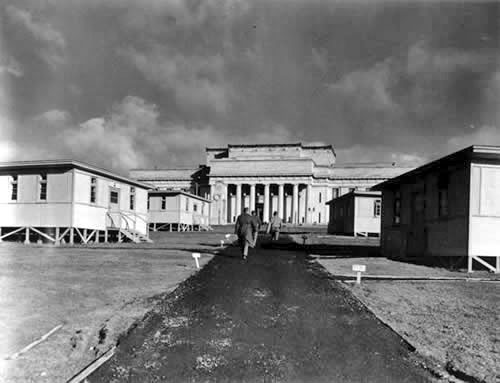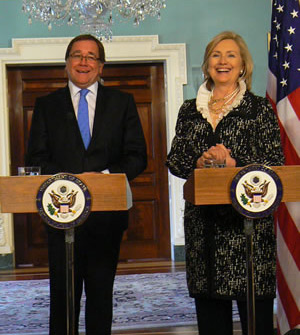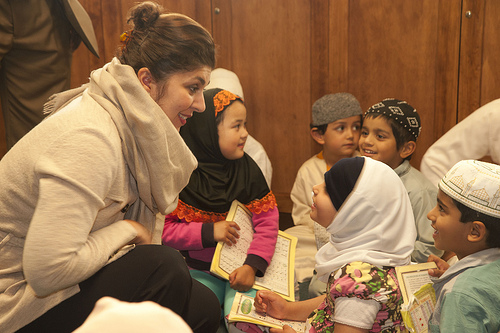In collaboration with the New Zealand Defence Force, Archives New Zealand, Auckland War Memorial Museum, and educational resource platform eTV, the Embassy is launching a video history competition for secondary school students to commemorate events in 1942 that changed the world.
U.S. Army troop ships began arriving in Auckland on June 12th, 1942, and the Marines landed in Wellington on June 14th, as American forces deployed to help deter an invasion of Aotearoa by Imperial Japanese forces sweeping southward through the Pacific. The Americans then staged from New Zealand with our allies in a series of battles that changed the course of the war, including at Tarawa and Guadalcanal.
The video competition, called “Making History,” invites young Kiwis to preserve the memories of their grandparents’ generation by making short videos that tell local stories about the presence in New Zealand of tens of thousands of American Army troops, Marines, and sailors during World War II.
This year’s 70th anniversary of the arrival of American forces is an important opportunity to thank and remember all who served during those uncertain, dark days – Kiwi and American, military and civilian alike. It is essential that we do so while we can. As the World War II generation passes, personal memories of the great sacrifices and achievements of that era will pass with those men and women.
History is not a clinical exercise reserved to elites. It’s a living, breathing, very personal story. Young people have an important role to play in preserving history, gathering stories before they are lost.
In fact, curious students can be particularly effective historians. Their (your) fresh eyes and evolving minds are drawn to overlooked details, eclectic nuances, and emotive content. They (you) have accreted fewer preconceptions and orthodoxies, and thus can often see the past through a clearer lens.
Contest rules and regulations? Only a few, and very straightforward:
The competition is open to all secondary school students here in New Zealand. Video entries must be documented and researched, and should be no more than 3 (three) minutes in length. Submissions should be uploaded directly onto the Making History contest website by 11:59pm on Sunday, June 3rd.
Entries can take the form of an interview with relatives or neighbors who remember the arrival or presence of U.S. military forces during the war; or digitization of family or community photos or other historical documents from the era; or a video tour of a local school or hospital built by U.S. forces; or a tour of places where soldiers lived or played; or any combination of the above.
Entries will be judged on (1) how well they capture the flavor of the War World II era in New Zealand, and (2) how well they combine original research and other new materials with the historical resources available via the eTV Making History website.
The website makes available for students’ use a unique library of film footage, still images, interviews, and other content specially provided by Archives New Zealand, Auckland War Memorial Museum, Te Papa, Kapiti U.S. Marines Trust, Auckland City Libraries, and others. The new cyber library is an exciting tool for budding documentary filmmakers, young historians, and indeed any student with an interest in history.
Further details are available on the Making History website. The information that I shared above, though, is pretty much it in terms of major rules, regulations, and guidance. The goal is to unleash rather than constrain. If you still have a question after looking at the website, let me know.
Once the contest closes, a blue-ribbon panel will make its selections, and winners will be acknowledged at a prize-giving ceremony in mid June featuring a public performance by the U.S. Marine Corps Forces Pacific Band.
Prizes will include a visit to a New Zealand Defence Force base or ship, special behind-the scenes-tours of Auckland Museum and Te Papa collections, and a day’s mentoring by a professional documentary film maker, each at a time convenient to the parties involved.
Thank you to our institutional partners for being so generous with their materials and resources. I have always enjoyed rummaging through archives, warehouses, basements, attics, and garages in search of treasure, and there is quite an impressive trove awaiting students who enter the competition. I look forward to viewing the videos that you create.
![]()
 RSS
RSS














 View my Profile
View my Profile Connect with Wellington
Connect with Wellington Watch our Videos & Subscribe
Watch our Videos & Subscribe Watch our Videos on Vimeo
Watch our Videos on Vimeo Connect on GPlus
Connect on GPlus US Embassy NZ
US Embassy NZ


 Post Entries (RSS)
Post Entries (RSS)

